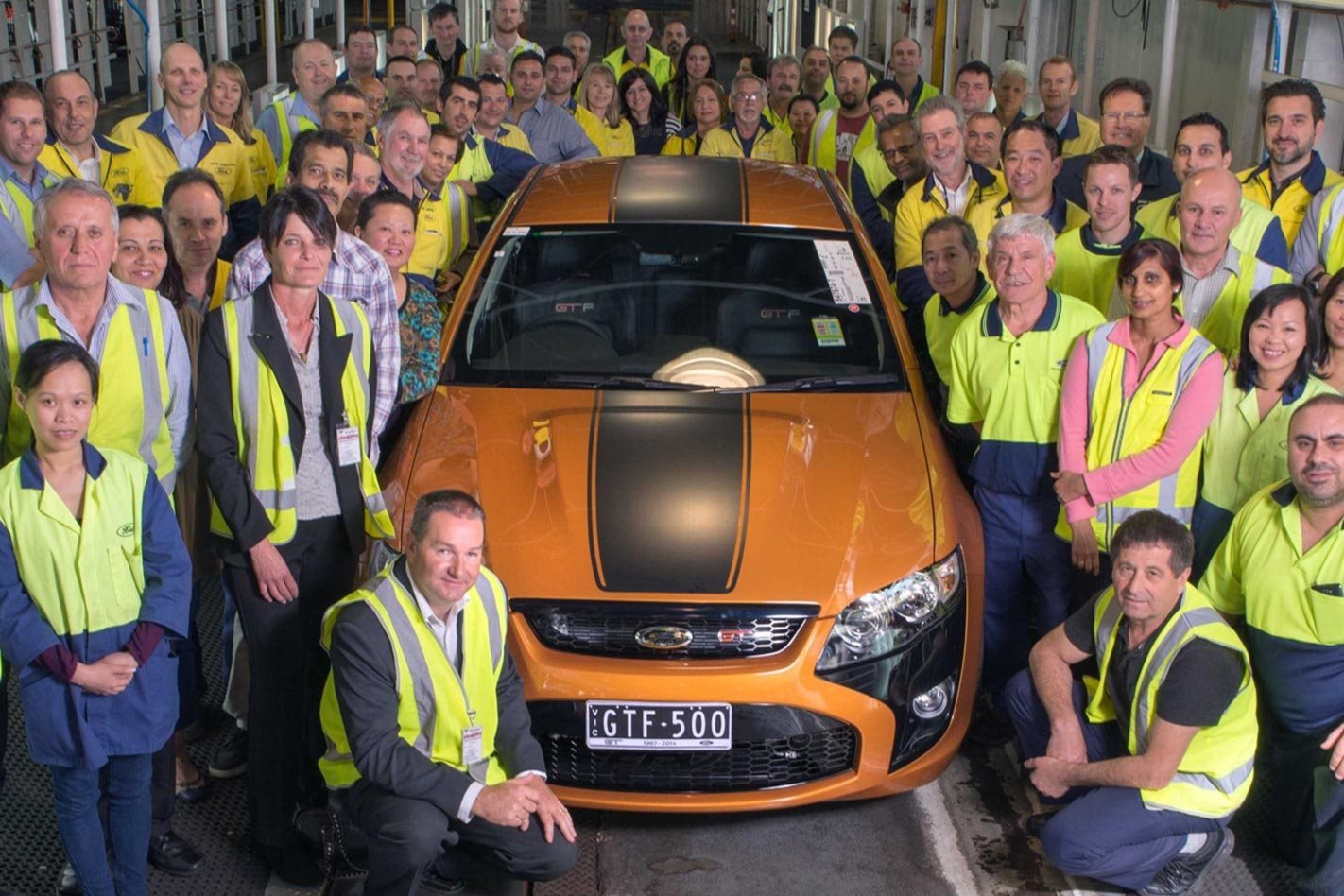“We didn’t want to do just a standard car,” Justin Capicchiano tells us. He’s Ford Australia’s program manager for Ford Performance, but in the days of Aussie-built cars, he was the program manager for the Ford Falcon and Territory.
He’s talking about the final Ford Falcon GT ever built, the 500th FPV FG GT-F.
It was sold at an auction before it was eventually built in 2014, alongside the first FG GT-F to another buyer, with proceeds going to support fighting cancer.
The buyer of the final GT-F, still its current owner, not only bought a one-of-a-kind car, but was given a one-of-a-kind experience thanks to a team of dedicated Ford Australia employees.
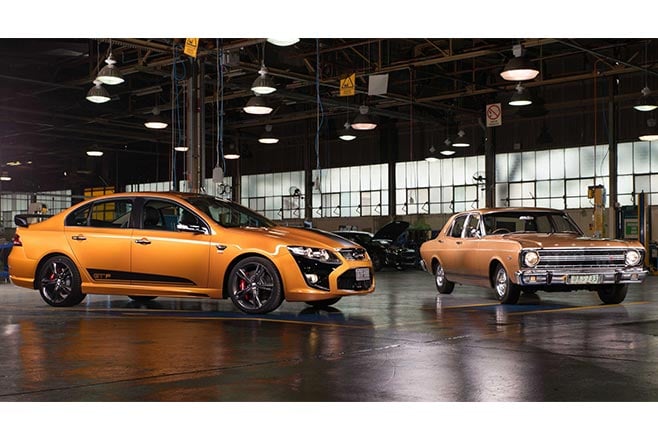
The final Falcon GT’s colour was chosen by the owner to pay homage to the first GT built
Painted in Victory Gold to pay homage to the first-ever Falcon GT built, the process of making sure its finish was perfect is intense. The car was double-clear coated and given a cut and polish, not to mention there was an entire second shell scrapped in the process.
“The whole car was wrapped in bubble tape as it went down the line,” Capicchiano says. “It was the most protected car we’d ever made. There were actually two shells. We did this car, then another shell went through the paint shop just in case there was any damage on the line.
Justin Capicciano as a guest on the MOTOR Performance Car Podcast
“You know, if someone’s got a wedding ring on when they shouldn’t and they scratch the car, we didn’t want to have to repaint the whole car and you’d never be able to match the colour because of the double clear coat.
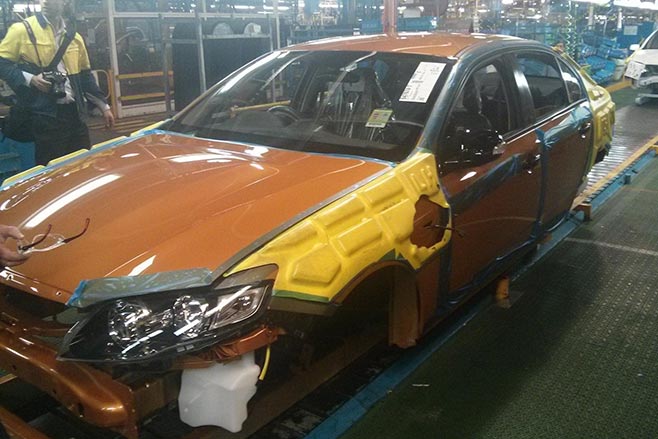
Yellow padding seen here is to avoid damage to the only GT to be finished in this colour
“The other car was painted with all the hang-ons, bonnet, doors, boot, and if we needed to replace anything we had another car that ran through at the same time. That way we could, say, swap a door on if anything went wrong. We did the same thing with the bumpers.
“Once we were finished with that car we sent it off to the crushers, because we weren’t going to do anything with it.
Lights out: Inside the final days of Ford’s Aussie manufacturing
“This is essentially the only set of FPV trim painted this colour, and since the paint wasn’t mastered at the supplier, we had to get a special colour sample made up for those bumpers and parts.”
This means there’s only one Victory Gold FG Falcon, and it’s manual. For posterity, there were 237 manuals and 263 automatics built for the total 500.
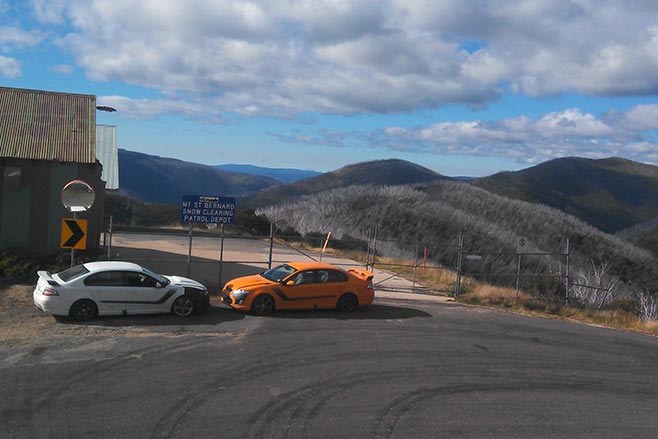
Capicciano was part of rigorous testing for the GT-F, test cars seen here in Victoria’s Alpine region
Capicchiano says it isn’t just the paint that makes GT-F 500 special, but the entire process of building the car, which even involved the owner.
“I couldn’t make a car like this on my own, I need help, and everyone stepped up.
“The owner got to come in and put their own badges on the car, help with the engine build, it was a real one-off experience for him.
“He’s a good guy as well. We still stay in touch today, and he is still deadset keen on his Falcon.
“He loves it, shows up at car shows, and he drives it! It doesn’t just sit under wraps and get trailered around. It’s got kays on it and I love that.
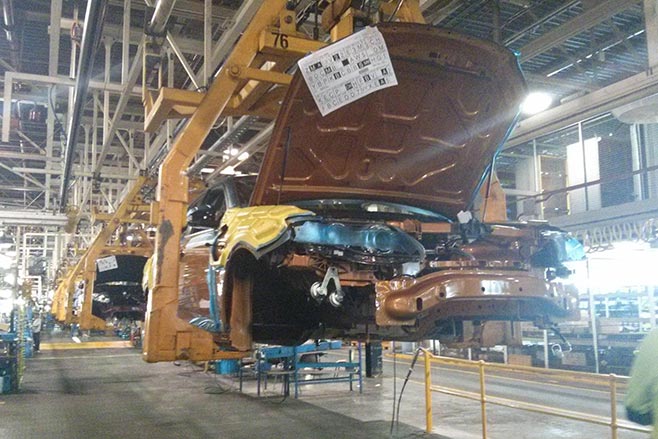
“He’s not afraid to take it around, show people, and it’s good to have it out in the community like that.”
Everyone at Ford wanted to go out of their way to make ‘GTF500’ special, doing things they wouldn’t normally do.
“Brian [Makin, ex-Ford Aus drivetrain guru] made it his mission to make sure the Geelong [engine plant] part of this story was captured, that’s why he went out of his way to bring the owner to Geelong and have him help with the engine there.”
Sprint to the end: the final Falcon ever built
The engine cover itself is a one-off laser-etched cover.
“Mako, he’s a legend. He really came up with some awesome ideas. Even with Sprint, he’s the one who suggested we recast the I6 engine, and he came up with how we do it. He was always going the extra mile to make things happen.”

We asked Capicchiano if there were were any specific stories from the build that really stood out to him from memory, and we weren’t disappointed with the response.
On the day GTF500 came off the line there was a presentation for the car, but there was also a bit of a car show happening over at Tickford. The owner wanted to take his new car there but since it wasn’t registered nor in his name yet, he couldn’t drive it.
Decade by decade: a toast to seven generations of Ford’s fast Falcons
“So I got the lucky card to drive it and we took it out,” Capicchiano says.
“Traditionally when we build a car we pop 10 litres of fuel in to move it around and run it around the plant, but because it had been started and moved around so many times it had run low on its fuel, and the bowsers were shut at the plant since it was after hours.
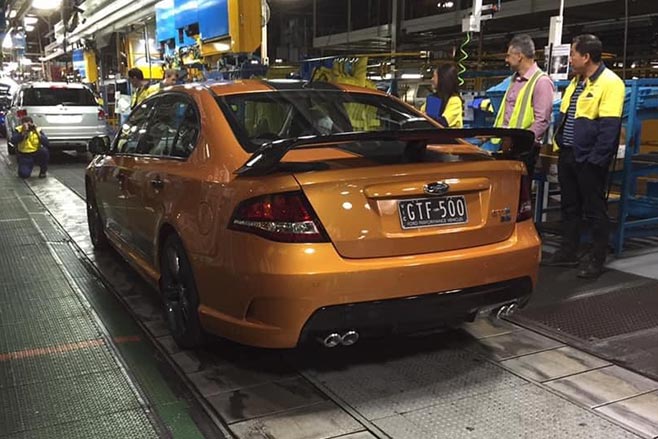
“There’s a Caltex across the road so I told the owner we’d need to go fuel it up, and when I started the car the distance to empty indicator was already at 0km. The needle was well past E. I found out how much was in it when we just got to the petrol station at Sydney Road because it just coughed and died. It just managed to roll to the bowser.
“I wasn’t going to make the bloke who just paid $236,000 for a car help me push it down Sydney Rd, that sends the wrong message I think, so I was just praying it didn’t stop on the main road because every Ford employee would be driving past in their fleet cars wondering what had happened.”
As far as one-of-a-kind experiences go, having to push the final Ford Falcon GT down the road outside the company’s national HQ would certainly have been hard to beat.


